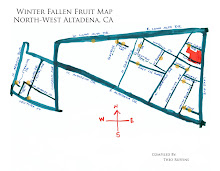
January 26th ushers in the Chinese Year of the Ox. Unlike our solar calendar, the Chinese calendar is a lunar one. A complete lunar cycle takes sixty years with five cycles of twelve years each. The ox is one of the twelve zodiac signs in Chinese cosmology, each believed to endow particular qualities to children born in that year. People born under the sign of the ox, like some of our sixth graders born in 1997, are known to be patient and calm (most of the time...) and make wonderful friends. During New Year, the Chinese community in Los Angeles celebrates with gusto. There are fireworks, parades, dragon dances and lots of wonderful things to see and eat. The famous Golden Dragon Parade takes place downtown along North Broadway with a spectacular procession of painted dragons moving to the sound of pounding drumbeats and attracting a huge crowd.
Many activities surrounding Chinese New Year are symbolic. The general idea is "out with the old and in with the new!". Some families open all the windows and doors of their houses on New Year's Eve to "let go of the old year". Homes are cleaned to welcome a fresh start and often arguments between family members are resolved. It's a great time to forgive old grievances and put away bad feelings.
Parents give money folded in red paper envelopes to children as a reward for good behavior and to wish them luck. Even the food eaten during New Year is symbolic: jiao zhi (chinese dumplings) for prosperity, noodles for long life and health, whole cooked fish for abundance, and whole roasted chicken and sticky rice cakes to symbolize family togetherness. Fruit like oranges, tangerines and persimmons represent happiness, good health and a fruitful long life.
What is your favorite way to eat jiao zhi? Fried, steamed or boiled? Hard decision, isn't it? The good news is that a batch of dough makes enough dumplings so you can enjoy them all three ways. They aren't hard to make, but you do get better at neatly pleating the dumplings edges with practice. Also, making dumplings is a true communal activity. Invite some friends over, sit around the table, fill dumplings and tell jokes. You'll all be amazed at how quickly the pile of dumplings grows. Oh, don't forget to bring your appetite. Dumplings are best cooked and eaten immediately. Dip them into a scallion/soy dipping sauce and wash them down with hot tea or a cold Tsingtao beer.
The recipe below, from Chinese cooking master Ken Hom, is simplicity itself. Start with the dough, and while that is resting, mix up the filling. It should make about 3 dozen dumplings.
-----
Most Auspicious Jiao Zhi
Dumpling Dough
2 cups unbleached all purpose flour
1 to 1 1/4 cups very hot water (I use hot tap water)
Place the flour in a large mixing bowl. Add the water in a steady stream, mixing all the while with a fork or chopsticks until most of the water has been incorporated. If the mixture seems dry, add more hot water. The dough should be moist but not sticky. Remove the dough from the bowl and knead it on a floured board until smooth -- about five minutes. Return the dough to the bowl, cover with a damp cloth and let it rest.
Filling
1/2 pound of finely chopped green cabbage
4 ounces fatty ground pork
4 ounces medium uncooked shrimp, peeled and finely chopped
1 ounce black mushrooms (like dried shitakes), soaked in hot water, stems removed and finely chopped
1 Tbs. light soy sauce
1 Tbs. dark soy sauce
1 Tbs. rice wine or dry sherry
1 Tbs. sesame oil (I like a roasted sesame oil)
1 tsp. salt
1 tsp. freshly ground black pepper
In a medium sized bowl, combine all the filling ingredients and mix thoroughly. Set the mixture aside.
Back to the dough. Knead the dough on a floured board for a minute, dusting the board with a little flour if the dough is sticky. Form the dough into a roll about 18" long and about 1" thick. Take a sharp knife and cut the roll into four equal lengths. Cut each length into 8 pieces making 36 equal segments. Press each segment with the palm of your hand and roll it into a 3 1/2" round circle. Continue rolling all the rounds, covering them with a damp cloth when completed.
Place two teaspoons of filling into the center of each round. Then fold the dough over the filling, pinching the two sides together until you have a half moon dumpling. Continue until you've filled all the dumplings. While technically dumplings can be frozen at this point until ready to use, we always dive right in and cook them all up.
To fry the dumplings, use 3 Tbs. of peanut oil for the skillet and 1 cup of very hot water. Heat a skillet (I use a 10" nonstick or well seasoned cast iron skillet) until hot and swirl in the peanut oil. Arrange the dumplings in the skillet, pleated edge up. They should be in a single layer, crowded together. Cook the dumplings over medium heat until the bottoms are lightly browned.
Then add the water and cover the pan tightly and cook the dumplings over high heat for about 2 minutes. Turn the heat down to a simmer, and continue cooking for another 8-10 minutes, until the water has evaporated. You'll start to hear the dumplings sizzling again and keep cooking until they are nice and crispy on the bottom. Remove to a serving platter and serve with simple dipping sauces like soy/rice wine/scallions, hot chili sauce or chili bean sauce.





